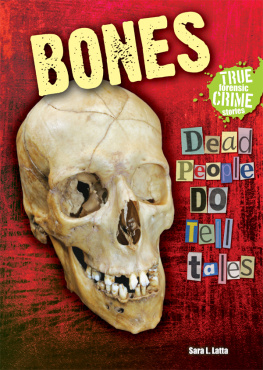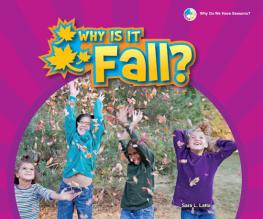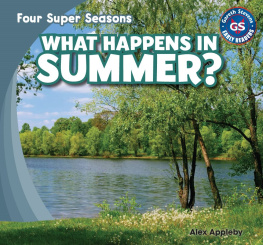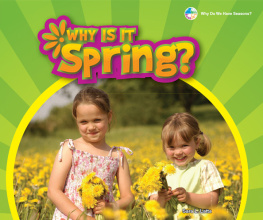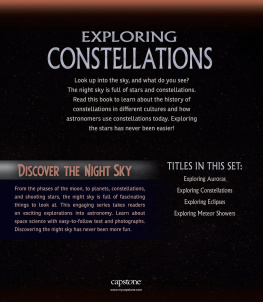When does summer start? Why is summer weather warm? What do plants and animals do in the summer? Learn the answers to these questions, and many others, as you start learning about the seasons.
Series Literacy Consultant
These books for new readers make science easy to read about and fun to explore!
Allan A. De Fina, PhD, Past President of the New Jersey Reading Association Professor, Department of Literacy Education, New Jersey City University
Science Consultant
These fact-filled books show how much fun it can be to learn about weather.
Harold Brooks, PhD, Meteorologist NOAA/National Severe Storms Laboratory, Norman, Oklahoma
Note to Parents and Teachers
The Why Do We Have Seasons? series supports the National Science Education Standards for K4 science. The Words to Know section introduces subject-specific vocabulary words, including pronunciation and definitions. Early readers may need help with these new words.
About the Author
Sara L. Latta writes about science and medicine from her home in Illinois. She has a BA in Microbiology from the University of Kansas, an MS in Immunology from the University of Chicago, and recently earned her MFA in Creative Writing from Lesley University.

Words to Know
pollen (PAHL ehn)Tiny grains made by flowers that allow seeds to grow into new plants.
tilt (TIHLT)To tip to one side. Earth tilts as it goes around the sun.
Winter, spring, summer, fallthese are the four seasons of the year.

Image Credit: Photos.com, a division of Getty Images
Each season lasts about three months. The seasons change from cold to warm, then back to cold. Summer is the warmest season.

Image Credit: Photos.com, a division of Getty Images
The earth goes around the sun one time each year. Earth tilts as it goes around the sun.

Image Credit: Mark Garlick/Science Photo Library
The first day of summer in North America is around June 21.
Lets look at summer in the north part of Earth. The north part of Earth tilts toward the sun in summer. The suns rays fall straight on this part of Earth. This makes summer sunlight very strong.

Image Credit: Photos.com, a division of Getty Images
Summer days have more hours of sunlight than winter days. There is more time to warm the air, water, and land.

Image Credit: Photos.com, a division of Getty Images

Image Credit: Photos.com, a division of Getty Images
Plants use sunlight to make food. Plants get water from summer rains. This food and water helps plants grow. From the short grass to tall trees, many plants grow fast in summer.

Image Credit: Photos.com, a division of Getty Images

Image Credit: Photos.com, a division of Getty Images
Leafy trees and bushes make good homes for birds and other animals. There is plenty of food for the animals to eat. Young animals grow and learn about their world in the summer.

Image Credit: Photos.com, a division of Getty Images

Image Credit: Photos.com, a division of Getty Images
Summer is a busy time for farmers. The summer sunlight makes crops grow fast. Farmers grow wheat for our bread. They grow juicy peaches and crunchy carrots for us to eat.

Image Credit: Photos.com, a division of Getty Images

Image Credit: Photos.com, a division of Getty Images
Most schools have a summer break. This is a good time to go on a trip. Many people go swimming, hiking, or camping. What do you like to do on long summer days?

Image Credit: Photos.com, a division of Getty Images

Image Credit: Photos.com, a division of Getty Images
Do plants need sunlight to grow?

Image Credit: Photos.com, a division of Getty Images
You will need:
- potting soil
- 4 small paper cups
- sunflower seeds or bean seeds
- Water
- Plastic Wrap
Step 1) Put some potting soil into four small paper cups.
Step 2) Press two or three seeds into the soil in each cup.
Step 3) Pour some water into each cup.
Step 4) Cover each cup with plastic wrap. Put the cups in a sunny spot. Check your pots every day.Dont let them dry out!
Step 5) When the seeds start to sprout, remove the plastic wrap. Put two of the containers in a shady place. Leave the other two in the sunny spot. Which plants grow better? Why? As your plants grow, move them to a larger pot.
Branley, Franklyn, M. Sunshine Makes the Seasons. New York: HarperCollins Publishers, 2005.
Blexbolex. Seasons. New York: Enchanted Lions Books, 2010.
McClure, Nikki. Mamma, Is It Summer Yet? New York: Abrams Books for Young Readers, 2010.
McKneally, Ranida T. and Grace Lin. Our Seasons. Massachusetts: Perfection Learning, 2007.


